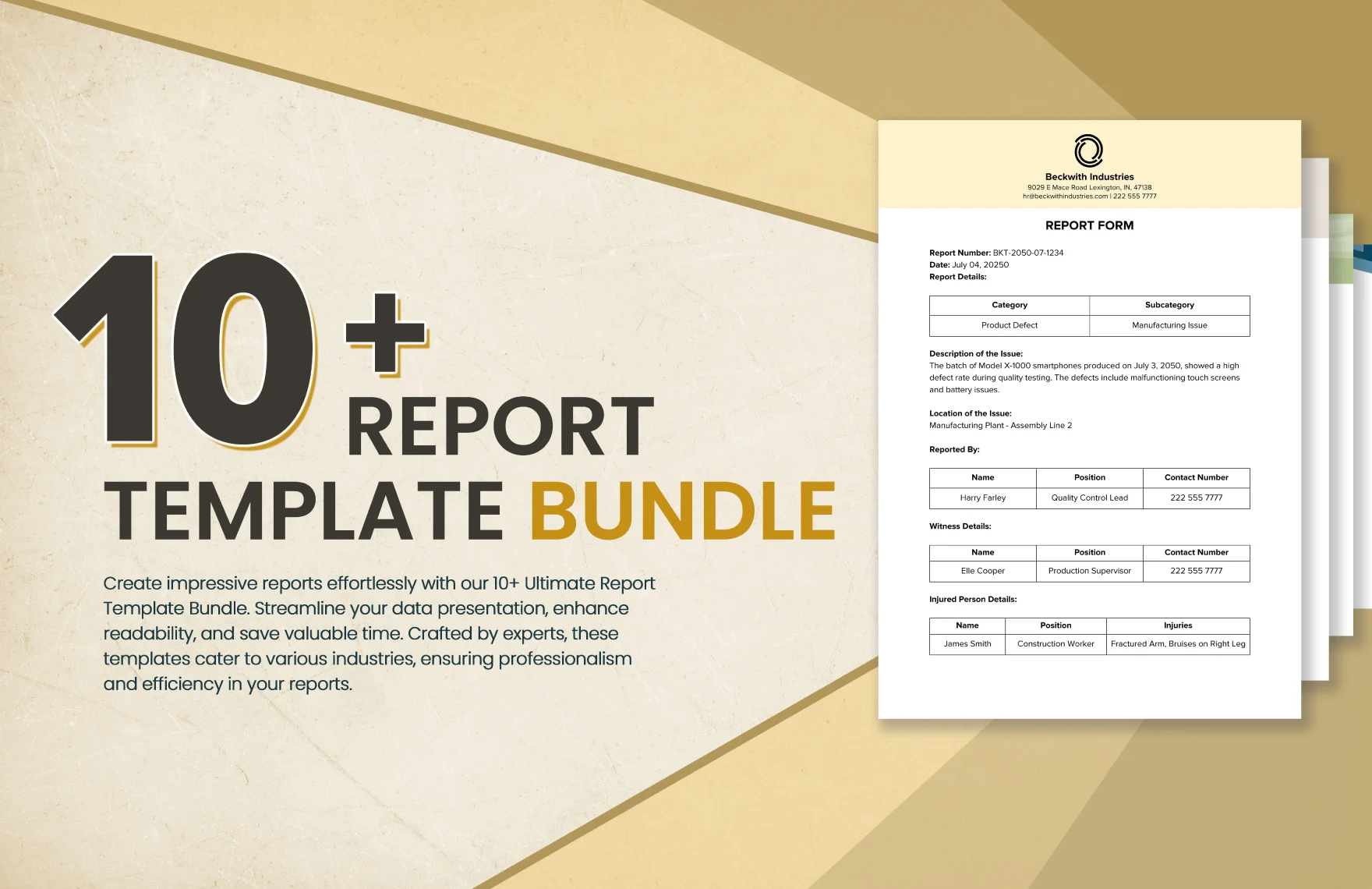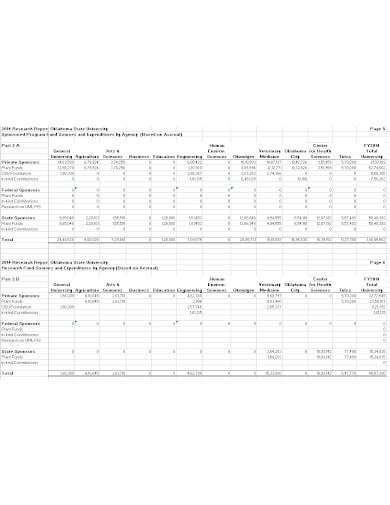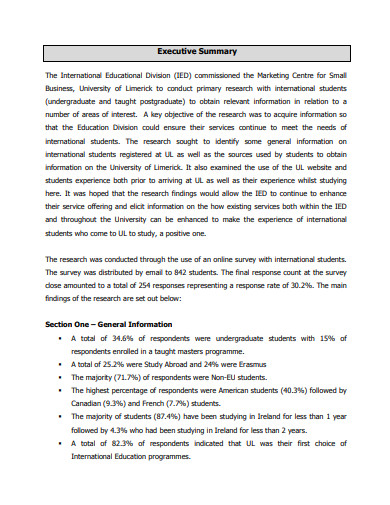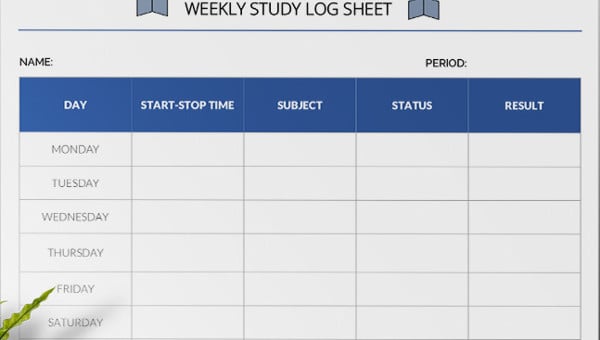
40+ Monthly Management Report Templates in PDF | Google Docs | Excel | Apple Pages
Managers usually write reports, and they have to be submitted every month to the higher authorities of a company. These…
Feb 14, 2025
A research report is a structured document that provides detailed insights into a specific study or investigation. It serves as a tool to analyze data, present findings, and offer conclusions for informed decision-making. Designed to meet academic, professional, or business objectives, a well-crafted research report ensures clarity, accuracy, and relevance. Its primary aim is to communicate the research purpose, methodology, and results effectively to its intended audience.



Market research is a structured attempt to collect consumer or target market data. It’s a very significant business strategy element. And just as with any other research, a report needs to be submitted. You can make this report with the help of this report templates in Google Docs. The other file formats available for this template include Word and Pages.

Research paper services reports can be made on various topics. This includes market research, business research, production research, and the like. If you want to make a proper business research report then you can make use of this report templates in Word. This template file is very simple and easy to use.

The title or the cover page is the main part of the research professional report. It should be made in a creative way that can grab the reader’s attention and also tells what your project is about. Make a great title page of your research report with the help of this report template in Excel for a cover page. The template can be downloaded in word format.
 newideas.com
newideas.comIn this world, for a company to survive and stay ahead of the competition, the main thing necessary is market research. And to help you with that task, we are offering this research report template. This template has been specially designed to help you make an efficient market research report. Download the template in PDF now to get it!
 adelaide.edu.au
adelaide.edu.auAre you a rookie at making research reports? Then we suggest that you check out our report simple in PDF. This template provides an example of a market research report that is very easy to follow if you need to make one for your needs. You can also customize this template according to your convenience. View a wider selection of research proposal templates right here.
 otago.ac.nz
otago.ac.nzYou have been researching a certain topic for quite a while now. You must want to know the outcome of that research when it has been finished. That is why we are offering you this research report template in word that you can use to make a research report for your project. All you need to do is download the template in PDF and you’re good to go.
 okstate.edu
okstate.edu educationstandards.nsw.edu.au
educationstandards.nsw.edu.au ul.ie
ul.ie atermark.silverchair.com
atermark.silverchair.com tea.texas.gov
tea.texas.gov istation.com
istation.com muhlenberg.edu
muhlenberg.edu

In most cases, the topic of research is generally assigned to the person. However, if you are lucky enough not to have a topic forced on you, then you have the freedom of choosing your topic. Be very careful while doing so. First of all, think about selecting a challenging topic you are interested in. Then, you won’t be bored when researching because you are sure to discover something new and you’ll enjoy the writing process. Don’t select topics that are too technical or general. For a wider selection of research agreement templates, check out more options here.
The thesis is the main component of any research. Before you effectively arrange your studies, prepare an operating thesis sample statement because it will direct your research and assist you to remain centered on your topic. Your declaration of the thesis should be concise, reflecting the sort of word document you want to write. There are three kinds of research thesis statements: argumentative or persuasive to argue the conclusion, expository to explain it, and analytical to make an analysis.
The next step involves doing the analysis research. You should be able to discover enough reliable secondary and primary sources in your article. You need to review them all thoroughly and determine appropriate proof to promote your thesis. At this stage, you should evaluate your references and start documenting your sources according to a citation style specified by your instructor. Try and ensure you use a particular style guide’s recent version. Later, when composing your article and constructing your bibliography, you will use your comments on quotes.
You’ve received loads of great ideas from your research. For a great presentation, you have to arrange them now. Do not miss this essential move because, without it, there will be no concentration on your project. The ultimate time will also increase that you will need to review your draft attempting to create meaning from your jumbled ideas. This is why you should make a sample outline. You must expedite your thesis and generate an operating sketch that you are planning to resolve, which will function as a roadmap and keep you aware.
This is the method midway through the research. When you have all the elements of the PDF research report, you need to produce the first draft with a name, sample quotations in text, and a line of description. If you want to create a great imprint on your audience, the title is essential as it is the first thing they see. It shapes their views on precisely what your report should say.
After the title, you need to start writing a simple report. And the first thing to include in the report is the introduction. This intro needs to be able to grab the attention of the readers at the first go. It can start with a provocative question, some specific or generic statistics, an anecdote, some unusual facts, or anything else that you think will generate interest. Just because you are writing a word research report does not imply that it has to be boring or very serious.
The intro is followed by a body that will be based on your simple outline. And this body is to be followed by a proper conclusion. Most research reports finish with their thesis remarks being restated. You can do it too, but repeating it word for word, and render your conclusion ineffective. Paraphrase or summarize your paper’s main highlights in the conclusion instead. If you want, you can also stress the importance of your findings. Find more research gantt chart templates by visiting this link.
As with any other reports outline, research reports also require proofreading. Generally, in all kinds of research reports, there are several changes to be made including statistical, grammatical, and spelling checks. This is why it was said earlier to make a rough draft first. Thoroughly go through the draft and check for any errors. Also, be on the lookout for any piece of information that you have missed. Once this has been done, you can submit the sheet report.

A research report follows a structured format including a title page, abstract, introduction, methodology, results, discussion, conclusion, and references. Optional sections like appendices, acknowledgments, and a glossary may also be included as needed.
In a research report, you write about the research objectives, background, methodology, results, analysis, and conclusions. It also includes an abstract, literature review, references, and optional sections like recommendations or appendices to provide comprehensive insights.
Preparation: Define the purpose of the report, identify the audience, and gather relevant information or data. Planning: Organize the structure and outline the report, determining the key sections and the flow of information. Drafting: Write the first draft, focusing on the content for each section without worrying about perfection. Reviewing: Edit and proofread the draft to refine the content, correct errors, and ensure clarity and coherence. Finalizing: Format the report, ensure proper citations, and prepare the final version for submission or presentation.

Managers usually write reports, and they have to be submitted every month to the higher authorities of a company. These…

Have you ever tried sending a Report Outline for corrective action to a company about bad food, product, or service?…

Crafting an event report is an essential step in analyzing the success and impact of any event, whether it’s a…

A report card is one of the crucial elements of recording the results of an evaluation of a leaner. Many…

Getting ready with your inspection report? Not satisfied with your report’s format? Don’t you worry? We have here an array…

Every organization must be careful while creating a daily or weekly activity report as it is with the help of…

The audit report is the ending result of an audit and can be utilized by the receiver person or organization…

Audit committee reports present a periodic and annual picture of the financial reporting method, the audit process, data on the…

Timely reports are vital for any logistics industry as data is essential to help make decisions. Plus, the industry’s scope…